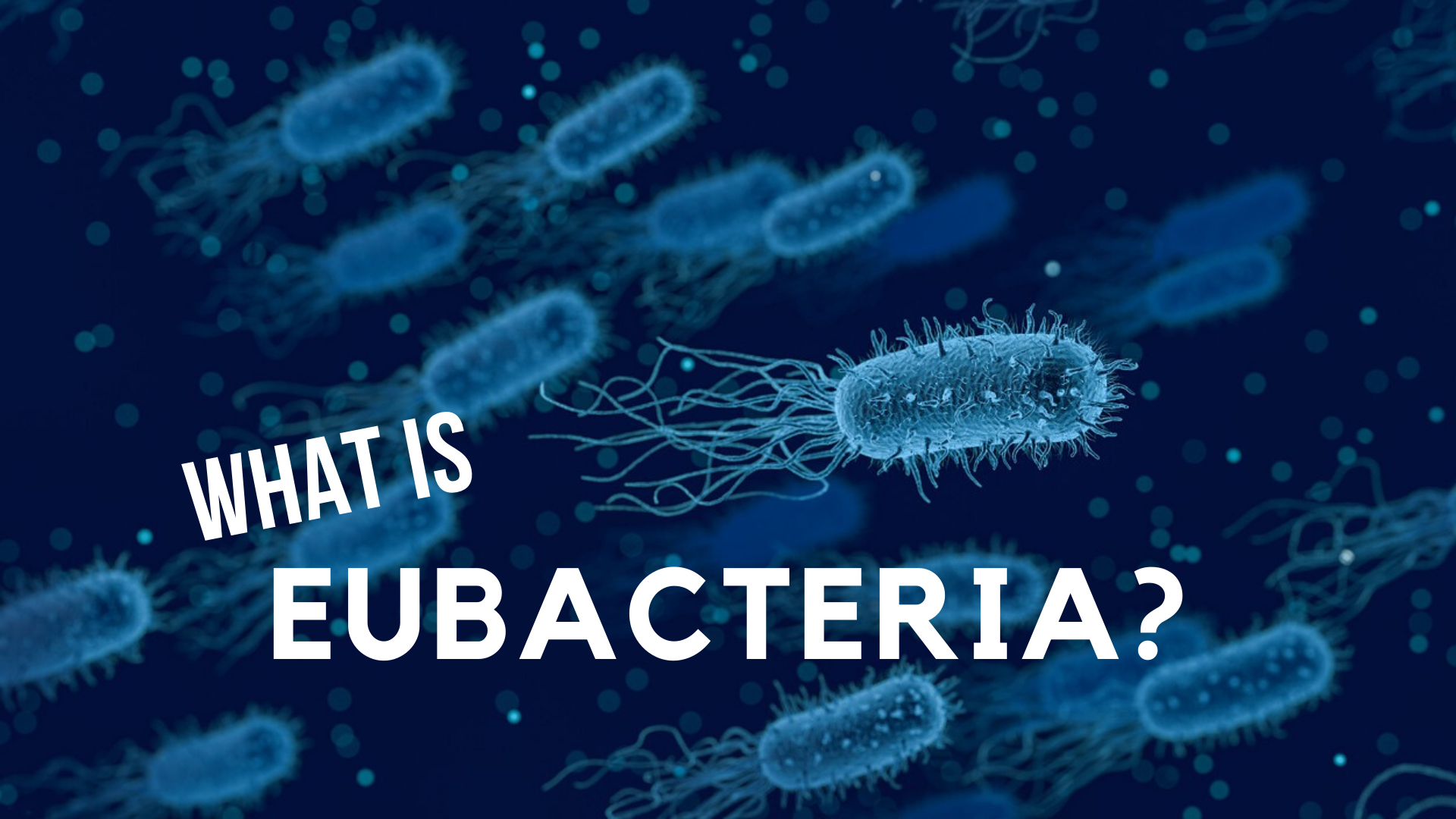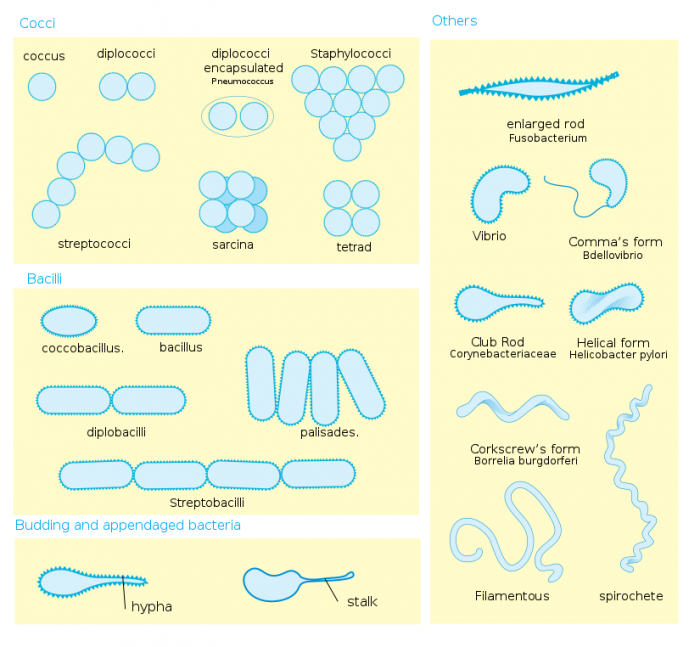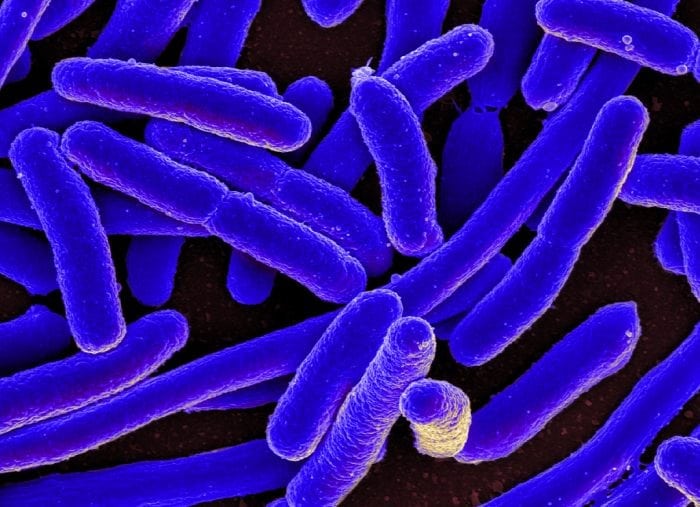
Some examples of eubacteria include Streptococcus pneumoniae, the bacteria responsible for strep throat; Yersinia pestis, thought to be the cause of the black death; E. coli, found in the intestines of every mammal; and Lactobaccilus, a genus of bacteria used to make cheeses and yogurt. All in all, the domain of eubacteria consists of a diverse group of prokaryotic organisms found all over the world.
The phylogenetic grouping of Eubacteria (Bacteria) is one of the 3 main domains in classical Linnaean taxonomy. The single largest and most diverse grouping on the phylogenetic tree of life, the domain of eubacteria is composed entirely of prokaryotic organisms, single-cell organisms that lack organelles and a membrane-bound nucleus. Bacteria are the oldest form of life on the planet and exist in virtually every habitat—forests, deserts, tundras, under the sea, in the Earth’s crust; even in volcanos and nuclear waste products!
“Happiness and bacteria have one thing in common — they multiply by dividing!” — Rutvik Oza
The overwhelming majority of bacteria are unknown to us. To date, there are approximately 30,000 named species of bacteria, yet some bacteriologists estimate that there may be as many as one billion individual species of bacteria on the planet. Constituting the infinitesimally small group of known bacteria are some of the most diverse and adaptable organisms on the planet, with a wide range of morphologies, metabolisms, survival strategies, and genetic mechanisms.
Characteristics/Morphology Of Bacteria
Bacteria were first observed in 1676 by Dutch microbiologist Antoine van Leeuwenhoek. The first bacteria observed were rod-shaped, hence the name bacteria which come from the Greek word “bakteria” meaning “rod” or “staff.” Since their discovery, bacteria of all kinds of morphologies have been discovered such as spheres, rods, and tightly coiled spirals, and star-shaped bacteria. Most known bacterial cells are 0.5-5.0 μm; about one-tenth the size of a eukaryotic cell, yet a handful a large enough to be visible to the naked eye. Like plant cells and fungal cells, bacteria have relatively thick cell walls that define their shape. Most bacteria exist as isolated single cells, yet some are known to group together into multicellular colonies.

Different morphologies of bacterial cells. Source: Wikipedia, licensed under CC0
Typically, bacteria lack intracellular organelles such as mitochondria or vacuoles. Bacteria also lack a membrane-bound nucleus so their genetic information floats freely in the intracellular cytoplasm. Unlike eukaryotes, bacteria only have a single circular chromosome with its own unique form of RNA. Additionally, many bacterial have extracellular structures such as flagella that assist with locomotion, finding food, transferring genetic information, and cellular division.
Because they exist all over the planet, bacteria have developed a number of different metabolisms to survive in their environments. Some bacteria contain chloroplasts for photosynthesis, some are heterotrophs and gain energy from the environment. Others are chemotrophs that rely on chemical reactions for energy, and some consume primarily inorganic compounds such as hydrogen, carbon monoxide, or lithium. Some bacteria are even known to change their metabolic type under variations in pH, temperature, or environment.
Most bacteria rely on binary fission to reproduce. The bacteria cell splits into two, creating a genetically identical copy. Some bacteria do transfer DNA to other bacteria via cell-to-cell contact (sometimes called “horizontal” gene transfer), but this process is not true sexual reproduction as it does not involve the exchanging of gametes. Bacteria typically reproduce very quickly, meaning that a single cell could result in a large culture in a short amount of time. They also show an impressive ability to mutate quickly to adapt to their environment.
Evolution Of Bacteria
Since they emerged so long ago, the exact evolutionary history of bacteria is still somewhat of a mystery. It is believed that bacteria and the closely related archaea were the first forms of life to appear on the planet some 4 billion years ago. At that time, all life on Earth consisted of unicellular organisms It is also believed that bacteria played an integral role in the emergence of eukaryotic organisms, as eukaryotic cells likely emerged as a result of prokaryotic bacteria engulfing other unicellular organisms, an evolutionary theory known as endosymbiosis.
“The capacity to blunder slightly is the real marvel of DNA. Without this special attribute, we would still be anaerobic bacteria.” — Lewis Thomas
Bacteria are also responsible for the explosive emergence of multicellular life that occurred 600 million years ago. Over their 3 billion year reign on the planet, cyanobacteria in the Earth’s oceans produced large amounts of oxygen via photosynthesis. The resulting change in Earth’s atmosphere to an oxygen-rich environment triggered the first know extinction event in which almost all anaerobic species died off. Oxygen-based reactions became the cornerstone of living organisms, and a large amount of energy yielded from oxygen reactions allowed for the rapid development of multicellular eukaryotic organisms.
Interactions With Other Forms Of Life
Because they have existed for so long, bacteria have developed a number of relationships with other organisms, ranging from the symbiotic to the parasitic and all other variants in between.
“Biology will relate every human gene to the genes of other animals and bacteria, to this great chain of being.” — Walter Gilbert
Most obviously, bacterial pathogens are a major cause of disease and sickness in eukaryotic organisms. In fact, it is probably not inaccurate to say that bacteria have caused the death of more humans through history than any other phenomenon. Bacteria cause a number of infections in humans such as typhoid fever, bubonic plague, botulism, syphilis, tuberculosis, pneumonia, meningitis, and anthrax. Despite the long list of bacteria harmful to humans, the vast majority of bacteria are not harmful to humans, and in some cases beneficial. Bacteria in the human intestines help break down and process nutrients or protect the body from pathogenic infection. For example, the E. coli bacterium helps produce vitamin K, necessary for proper blood clotting and bone formation, while Viridans Streptococci in the throat prevents the incubation of infectious pathogens. Humans have also found uses for bacteria such as lactic acid bacteria, used in making cheese and other fermented products.

A scanning electron microscope image of the E. coli bacterium. Source: NIAID via Flickr, licensed under CC-BY 2.0.
Bacteria have also found a home in the world of biotechnology. Bacteria grow quickly and are easy to genetically manipulate. By changing the genes of bacteria and observing the correlated change in phenotype, biologists can map the functions of genes, enzymes, and metabolic pathways. This knowledge has even led to the creation of artificial bacteria, complete with their own unique genetic code. Current work in biotechnology seeks to custom engineer bacteria for purposes like breaking down plastics, producing insulin, and removing fossil fuel waste.
In summation, bacteria have a storied history and constitute one of the largest and most important groupings of living organisms. An incredibly diverse group, they were the first form of life to develop on Earth and have played an important role in the evolution and survival of various species. Bacteria are at the forefront in modern genetic engineering and their potential applications are wide-spread and far-reaching.









